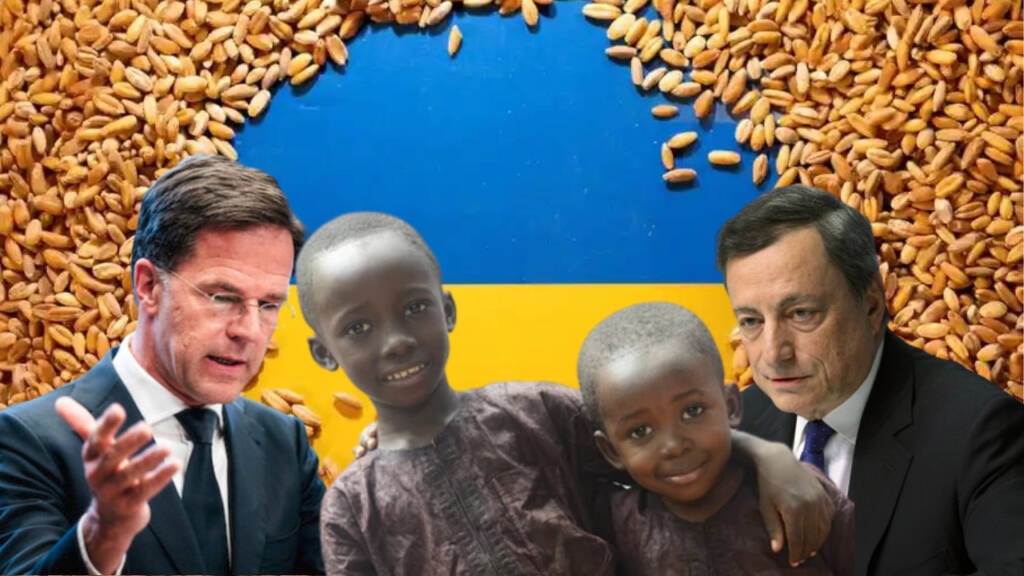The European Commission developed a plan of action in support of African countries and other countries that required Ukrainian food grains. A “solidarity lanes” project was developed by the commission to ensure that the grain stored in Ukrainian silos is prepared for exports.
You’ll be surprised to learn what happens to these grains after they arrive in Europe from Ukraine, and also why they can’t reach the countries that most need them.
In normal circumstances, around 10 percent of the world’s food grain needs are being fulfilled by Ukrainian exports. Amongst this, one-third of the exports are destined for Europe, China, and Africa. But due to the Russia-Ukraine conflict, the Ukrainian grains could not be exported to these countries.
EU’s bogus solidarity plan
In order to facilitate the movement of these food grains, on May 12, EU Commissioner for Transport Adina Velyan presented in Brussels a “Solidarity Lanes” action plan designed to assist Ukrainian food exports. Scaling up rail freight and any other practical modes of transportation, eliminating bottlenecks, and encouraging participation from the logistics business to provide equipment and open up freight corridors were all important components of this plan.
Under this initiative, 20 million tonnes of grain were proposed to be delivered from Ukraine via the infrastructure of the EU in less than three months.
All in all, the solidarity plan was a set of measures to facilitate grain exports from Ukraine to other countries in Africa and the Middle East via the EU.
Nonetheless, at first, this plan is bogus for the main reason that the Commission’s ‘solidarity lanes’ are mostly based on facilitating railway transport of grains, but as the facts say, seaports accounted for 90% of Ukraine’s export before the war, so the plan of using railway was a farce.
The plan has itself been criticized by the Ukrainian lawmaker Larysa Bilozir saying that it would not “help substantially in significantly increases exports without de-blocking southern Ukrainian ports or rerouting through Baltic ports.”
Ukrainian grains land at an unexpected destination
However, despite constructing these solidarity lanes, Ukrainian supplies reached Europe but they could never make it to their final destinations. By “final destination”, we mean the African nations and other Middle East Asian nations which need these grains desperately as most of them rely on Ukrainian grains.
Norbert Lins, the chairman of the AGRI committee, said that only 138,000 tonnes of wheat have passed through the two borders of Romania and Poland, which are now crucial for exports from Ukraine, with hardly any reaching the final recipients, where the food crisis is particularly severe.
Wondering what the potential cause of this might be? You see, Italy, Portugal, Spain, and the Netherlands are the typical importers of these food grains. In these nations, raising live animals makes up a sizable portion of agricultural activities. According to EU Livestock data from 2021, Spain has the largest livestock herd in the European Union, with around 58.8 million heads, while Italy has the fourth-largest livestock population in Europe, with approximately 22.5 million livestocks.
Read more: Ukraine refuses to supply grains to a famished West
There is a shortage of cheap feed for these livestocks due to rising fodder prices caused by the conflict between Russia and Ukraine. And there’s a catch in this! These nations are currently feeding their cattle with food grains imported from Ukraine through these ‘solidarity lanes’.
We acknowledge that feeding cattle is crucial, but this does not entail that the poor African countries must pay a price for the EU’s decision to embargo Russia. And now, as these four countries—Italy, Portugal, the Netherlands, and Spain—take control of Ukrainian food supply, it demonstrates how self-centered these EU countries are.
